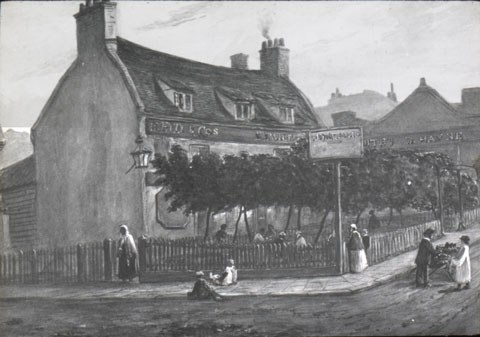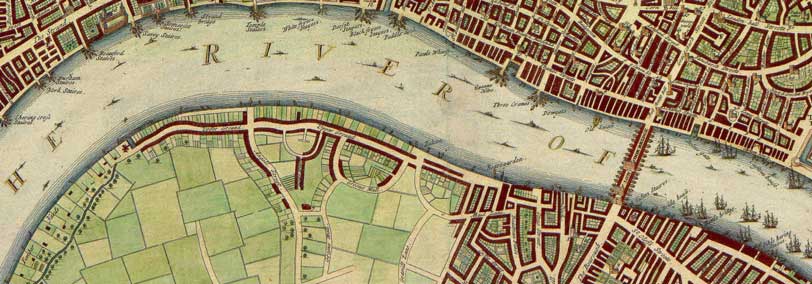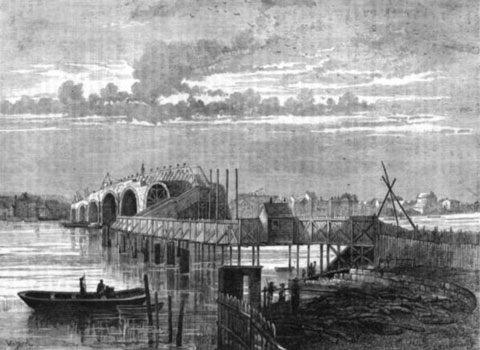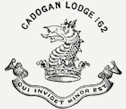A proud heritage in fact: How many English Freemasons
enjoy membership of a Lodge older than its number ?
The Lodge was originally known only by the name of the house at which it met. The "Lodge at the Angel" began its regular, warranted, recorded life on 9th February 1767 at the King's Arms, Bennett Street, Southwark, under the name of BLACK FRYERS BRIDGE LODGE.

The Lodge had its roots in Operative Masonry, the founders were operatives belonging to a Lodge already old before its submission to Grand Lodge. The nature of the young Lodge quickly became speculative (as opposed to operative). It was felicitously sited and consequently prospered and that it took a full share in spreading knowledge of the Order across the whole country and even to America.
But what attracted candidates to this Lodge from places so far afield and apart as Ipswich, Aberystwyth and New York ?
KING'S ARMS, SOUTHWARK
SOUTHWARK
The answer lies with the South Work (the defences on that side of the Bridge) or Southwark, city in everything but name, whose industrious citizens were quick to realise the potentialities of their river frontage as a port. Lying at the apex of all the roads from the Channel ports across Kent and Surrey to London, it was a resting place (even if not journey's end) for most travellers into or through it.
In those unhurried spacious days the traveller who remained either for rest or business or merely passed through would almost certainly have come into contact with a member of the Craft for, apart from the numerous resident Esquires and Gentlemen, every profession, trade and occupation, notably those of Waterman, Innkeeper and Victualler, were plentifully represented among members of the several Lodges working on the South Side of the river. "Working" may be literally interpreted, for in those days this Lodge held regular meetings on the second and fourth Tuesdays of every month.

Copyright: W.Hollar
Southwark certainly enhances the heritage: settled by the Romans, burned by the Normans. Kings, commoners, saints and rascals all have left an imprint on it. One recalls such names as Chaucer, Shakespeare, Dickens, that the highways and inns were those used by the Canterbury Pilgrims, that Elizabethan playhouses along the Embankment flourished during the golden age of English drama and that the coaching inns and taverns entertained Samuel Pepys.
BLACK FRYERS BRIDGE
Early in the 18th century the need for another outlet across the Thames, to Surrey and Kent, became evident but the project was delayed for some time by opposition from the City of London. When, however, Old Westminster Bridge was built about 1750, the City of London's almost immediate answer was Black Fryers Bridge.

Some of the members of the original Operative Lodge would almost certainly have been employed upon Westminster Bridge but, if they were still retained when work began upon the bridge nearer their homes, some would have transferred, not alone for that reason but because their professional interest would have been captured by the use for the first time in this country of the elliptical arch. This natural interest would have been increased by the widespread discussion which arose between mathematicians and others (including Dr. Johnson) as to the practicability of constructing such an arch.
BLACK FRYERS BRIDGE UNDER CONSTRUCTION
Engaged in work upon this bridge the masons would feel a need for their own Lodge; naturally their choice of a name for it would be factual.
The construction of the bridge was authorised by an Act of Parliament 7, King George II, 1756. The earliest dated entry so far traced of the beginning of the work is "From midsummer 1758." Many plans and models were submitted and ultimately a design by the young Scot, Robert Mylne, was accepted, then publicly attacked, submitted to a panel of experts and again approved and adopted.
Mylne's bridge was built of Portland stone and consisted of nine semi-elliptical arches, the centre one 100 feet wide with a rise of 41 feet 6 inches; the total length of the bridge was 995 feet and the width 45 feet. Double Ionic columns, supporting small bays, were placed against the face of each pier between the arches. A literary controversy arose over the plans, in which the conflicting claims of semi-circular and semi-oval arches and of iron railing were warmly discussed; Dr. Johnson and the poet Churchill in these matters taking the side of Mylne's opponents. The foundation stone was laid by Sir Thomas Chitty, Lord Mayor, on 31st October, 1760.
The bridge's name marks the association of the site with the Order of Black Friars or Dominicans, whose magnificent monastery formerly adjoined the City end of the bridge. Blackfriars at that time presented a picture of squalid poverty and degradation due, no doubt, to the contiguity of the four prisons— Ludgate, the Fleet, Newgate and Bridewell.
The cost of constructing the bridge itself was £152,840, but its approaches and the Watermen's compensation raised this to £230,000. The great arch was opened on 1st October, 1764, when the Lord Mayor, Sheriff, Aldermen and others rowed under it in the City barge. Foot passengers were allowed across in 1766 and the bridge was finally completed and opened on 19th November, 1769. Until 22nd June, 1875, there was a toll of one halfpenny (one penny on Sundays).
 Cadogan Lodge History - Part 2
Cadogan Lodge History - Part 2

